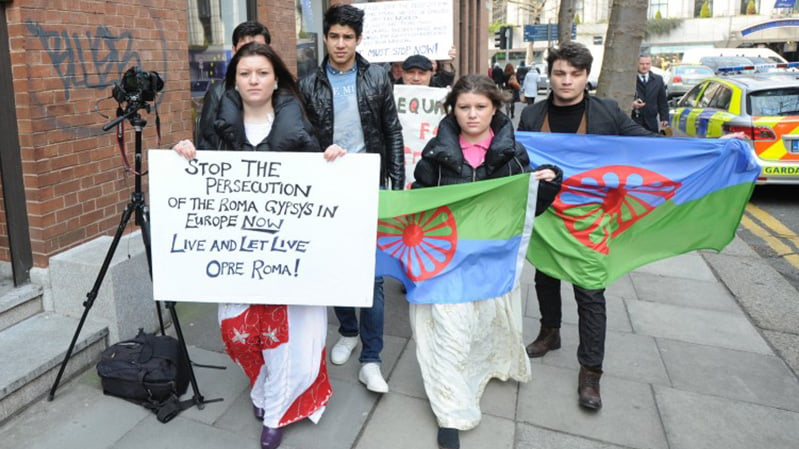Persecution: enslavement, forced assimilation, segregation, genocide perpetrated by Nazi Germany during World War II, and other human rights violations – the history, both ancient and modern, of the Roma of East-Central and Eastern Europe and the Balkans, is a litany of suffering.

And the situation is little different today. Despite depictions of Romani people in art and literature which present romanticised narratives of mystical powers, fiery passions, musicality and an indomitable love of freedom, day-to-day reality throughout the regions they inhabit can be harsh. Often perceived by the majority populations as given to crime or antisocial behaviour, Romani communities are often poor and suffer from widespread discrimination. Romani people have been widely known in English as Gypsies, which is considered by some Roma to be inaccurate and/or pejorative. The word Gypsy is of course derived from “Egyptian”, based on an original misconception that this was their land of origin.
But putting sociological and socio-economic realities to one side, the Romani language is a fascinating subject in itself. Linguistic evidence has shown that the roots of this Indo-Aryan macrolanguage almost certainly lie in India, and is the only Indo-Aryan language spoken exclusively outside the Indian subcontinent. Recent genetic findings support this thesis. However, there is no known mediaeval record of a migration from India to Europe that can be connected indisputably to the Romani. The people themselves kept no chronicles of such a journey, nor even oral accounts.

Linguistic data suggest that the Roma left the Indian subcontinent in the second half of the first millennium AD, passing through what is now Afghanistan, Iran, Armenia, and Turkey. The cause of the Roma emigration is unknown due to the absence of written records. What is known is that they reached the Balkan peninsula by the 14th century AD. Some Roma migrated south to North Africa and reached Europe through the Strait of Gibraltar.
The development of Romani was strongly influenced by its contact with European languages. The greatest influence came from Byzantine Greek which had an impact on Romani vocabulary, phonology and grammar.

Dialect differentiation began with the dispersal from the Balkans around the 14th century and on, and with their settlement in areas across Europe in the 16th and 17th centuries. The largest dialects are Vlax Romani (about 500,000 speakers), Balkan Romani (600,000), and Sinte Romani (300,000). While there are several proposed classification models for these dialects, there is some dispute as to whether some are divergent enough to be considered languages of their own or whether the dialect diversity is just like within any average European language. Some communities speak mixed languages known as Para-Romani, based on the language of the surrounding majority population but retaining vocabulary of Romani origin

While estimates of Romani people around the world vary wildly from 2 to 20 million, conservative estimates put the number of speakers of the language at 3.5 million. And yet the language is considered “definitely endangered” according to UNESCO Atlas of the World's Languages in Danger, which means children no longer learn the language as mother tongue in the home. Many Roma no longer speak the language, opting instead for the local majority language or Para-Romani varieties, rather than dialects of the Romani language itself. And while Romani is recognized as a minority language in many countries, it has official status in none.

There have been and still are attempts towards standardizing the language, but efforts towards global standardization so far have been fruitless. The current approaches are mostly in favour of regional/local codifications.
Some of the challenges of cross-dialect communication include:
- the habit of borrowing words or phrases from a second language
- the traditional use of the language primarily within extended family and close-knit community
- the preference of single Roma groups for their own dialects
- lack of access to education and high degree of illiteracy
- the natural lack of rigid hierarchical social structure and consequently no possibility of a dominant form of speech or an authority to implement one
Yet another challenge for standardization is the writing system, as Romani has been exclusively oral for most of its history. However, most codification attempts and literature already produced employ Latin-based orthography.

The Council of Europe has assumed a leading role in the process of granting Romani international recognition.
Watch the video created for International Romani Language Day to hear the sounds and discover more about this fascinating language, as well as some insights into the culture:
And to finish, a fact I bet you were unaware of: despite the threats to its existence did you know that Romani is currently the largest minority language in Europe?

See all entries from this Language Watch series


